My Life in Pictures
Part 2: Studies and Career 1964-1974
Go to Part 1: Origins, Childhood and Youth, to 1964
Go to Part 3: Pioneering and International Service 1974-present
My professional direction in life really began to unfold with the choice of graduate studies and my interest in basic research. It was only later that other choices opened up, driven by my basic values, that steered me away from a career in academia towards wider fields of service to humanity. For a more professional view of my career development, see the separate page on My Life of Service.
SANTA BARBARA/GOLETA 1964-1969
UNIVERSITY OF CALIFORNIA AT SANTA BARBARA
My professional life really began with my graduate studies in biology and ecology. After taking a summer course on marine algae at the Hopkins Marine Station of Stanford University in 1964, I moved to Goleta near Santa Barbara, California, buying a little house near the University of California at Santa Barbara, to enter a doctoral program in marine biology with Professor Michael Neushul Jr,, a young but promising researcher on marine algae. I received a NDEA Title 4 federal fellowship to cover my first three years of graduate study.
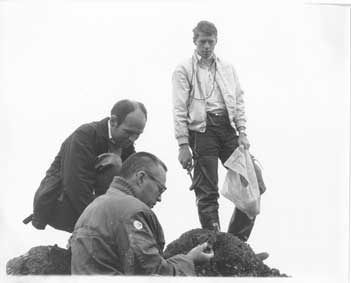 .
. 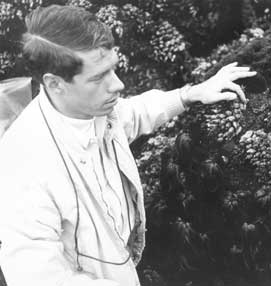 .
. 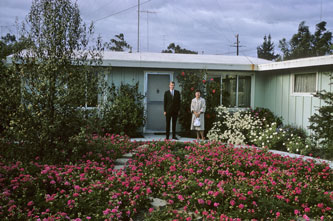
Prof. Michael Neushul (bottom), fellow graduate student Larry Liddle and myself collecting marine algae at Carmel Point in 1967; my house in Isla Vista, Goleta, 1965
We learned scuba diving and took field trips to Baha California. I decided to study one of the seaweeds on the local shore, the brown alga Zonaria Farlowii, studying everything from its ecology in the field to the ultrastructure of its cells using an electron microscope. I also spent the summer of 1965 at the Friday Harbor Laboratories of the University of Washington on San Juan Island. We formed a Bahá’í Club at the university with many activities on campus, and as the number of Bahá’ís in Goleta increased, we formed our first Local Spiritual Assembly.
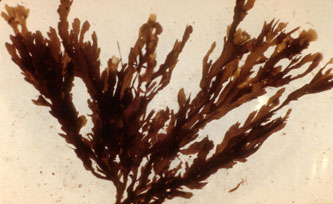 .
. 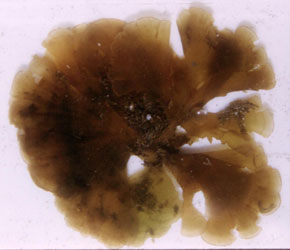 .
. 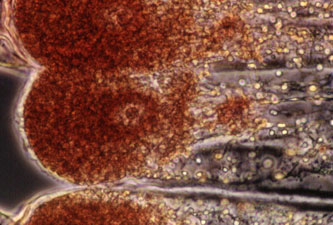
The brown alga Zonaria, intertidal and subtidal forms; apical cells
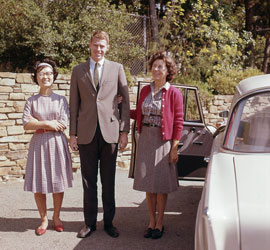 .
. 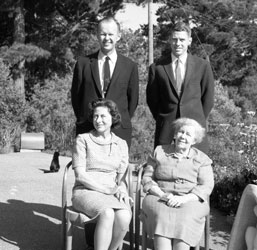 .
. 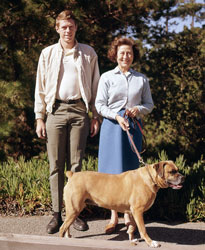 .
. 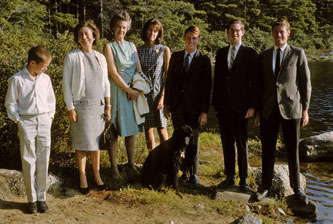
Pebble Beach, me with Ako Ito and Mother 1964; with parents and Grandmother 1964; New England, with Becketts 1965
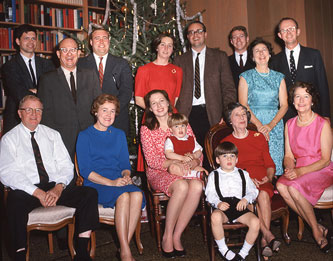 .
. 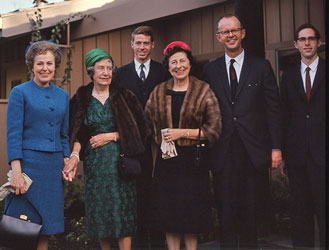 .
. 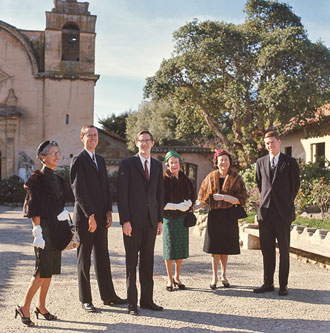
Christmas 1965 with Herberts, Uncle Greg, Maymay, Aunt Teresa; Cousin Annabelle's wedding, Carmel Mission 1966
In 1966 I made my first long scientific/travel-teaching trip, first to Japan to give a scientific paper on behalf of my professor at the Pacific Science Congress in Tokyo, then visiting Baha'i communities and seaweed farming areas in Japan (Hokkaido below), Korea and Taiwan, before flying over the pole to Germany to give another paper at the First European Symposium on Marine Biology on Heligoland, Germany, and on for a seminar at the University of Paris. In Tokyo, I also had the privilege of meeting Hand of the Cause Mr. Samandari, who had met Bahá'u'lláh, and spent two afternoons recording the reminiscences of Hand of the Cause Agnes Alexander, who first brought the Bahá'í Faith to the Pacific in 1900. Both were in their nineties.
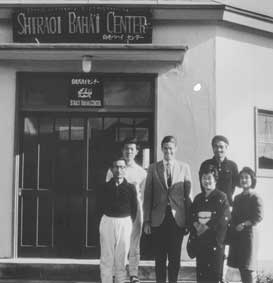 .
.  .
. 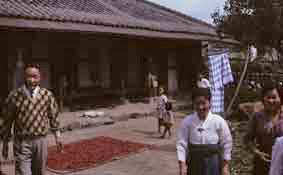
Bahá'í Centre among the Ainu on Hokkaido; Sapporo Bahá'í Center; visiting Bahá'ís on Chindo Island off the coast of Korea
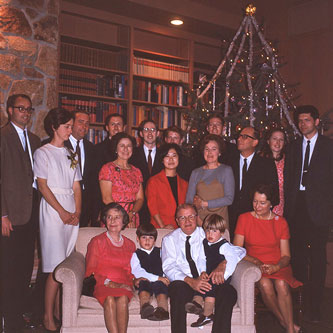 .
. 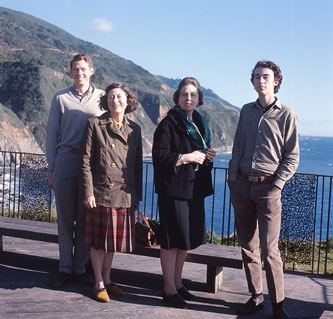
Christmas 1966 at Herberts; Nepenthe with Mark Hofman 1967
1967 was a busy year from a Bahá'í perspective, since it was the hundredth anniversary of Bahá'u'lláh's proclamation to the kings of the world that He was the Promised One. His tablets to the kings were presented again to Heads of State and Government around the world, and a big effort was made to spread the message in national and local communities everywhere. The California Victory Committee was formed, advised by Hand of the Cause Bill Sears, and I was a member. The committee asked our UCSB Bahá'í Club (5 members) to experiment with proclamation on a college campus, so we organized a series of ten lectures with distinguished speakers on themes of current interest, such as racial unity with Eulalia Bobo, sister of the boxer Joe Lewis. Up to 200 students attended the lectures, and the student newspaper said we were the most active group on campus. I was also a member of the Southern California Bahá'í Summer School Committee.
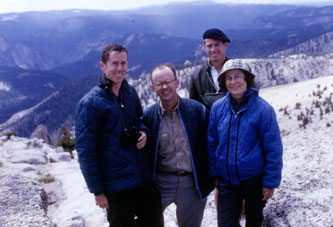
Me, Keith and parents on Mt. Hoffman, Yosemite, 1967
In 1968, on the hundredth anniversary of Bahá'u'lláh's exile to the Holy Land, our family attended the Bahá'í Mediterranean Conference in Palermo, Sicily, and then continued on to the commemoration at the Bahá'í World Centre in Haifa, Israel. We also stopped in Padua, and to see the Bahá'í House of Worship in Langenhain, Germany.
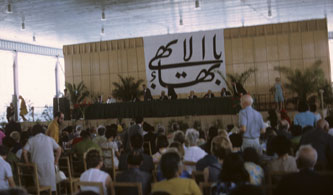 .
. 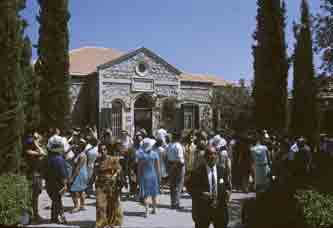 .
. 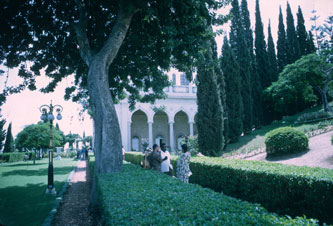
Palermo Conference 1968; Haifa, Bahá'í World Centre, Eastern Pilgrim House; Enoch Olinga in the gardens of the Shrine of the Bab
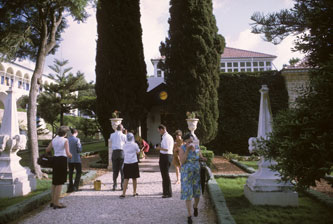 .
. 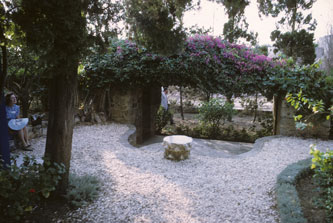 .
. 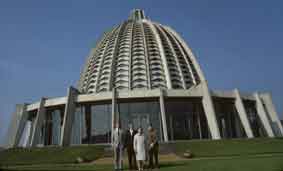
Shrine of Bahá'u'lláh, Bahji; Mother in Ridvan Gardens; at Bahá'í
House of Worship, Germany
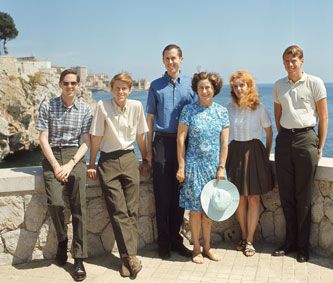 .
. 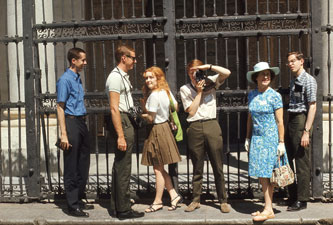 .
. 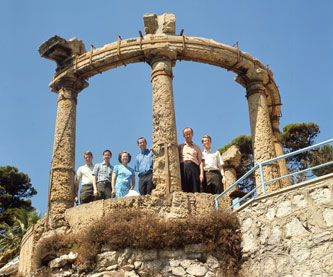
Family in Padova 1968
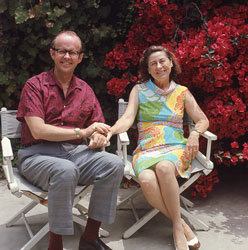 .
. 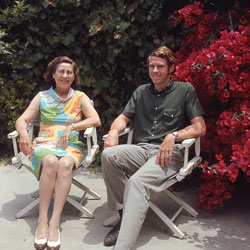 .
. 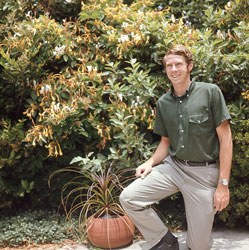
At home in Goleta, California, with my dad and mother on a visit, 1968 (see also Homes and Gardens)
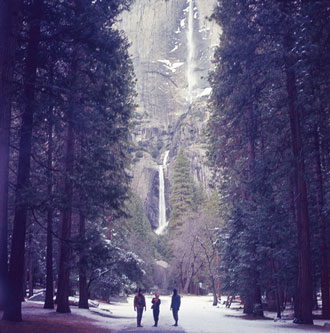 .
. 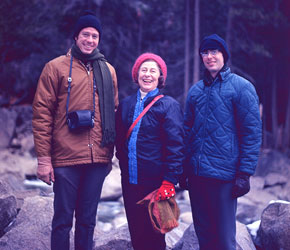 .
. 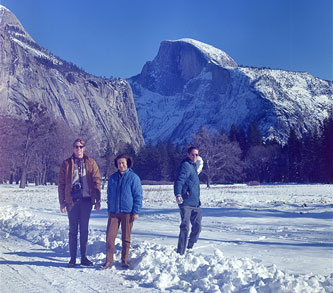
Me, Roger, Mother, Yosemite, December 1968
Shortly before I completed my doctorate in 1969, the Santa Barbara oil spill of 1969 spread oil across my research material on the beach, and I was doing pollution studies by default, an early baptism on environmental problems.
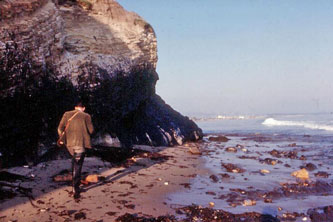 .
. 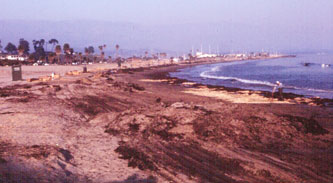 .
. 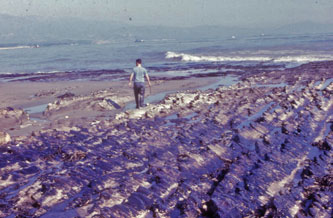
Santa Barbara oil spill 1969 and sand removal for beach clean-up
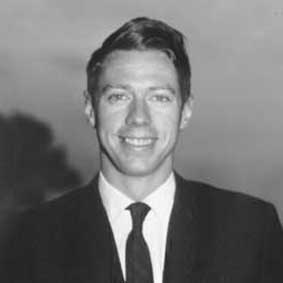 .
. 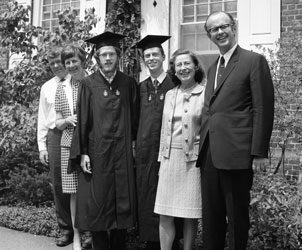 .
. 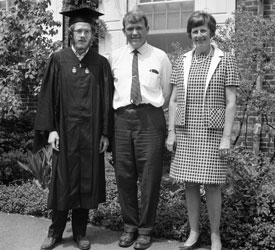
Me in 1969; Greg's graduation from Harvard 1969, with Walter Hewlett and parents
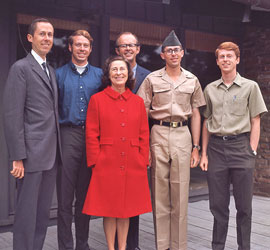 .
. 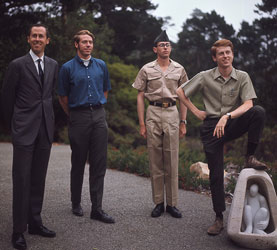 .
. 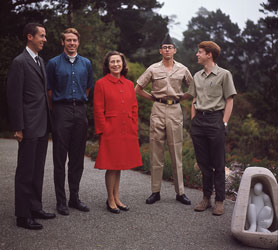
Family in Pebble Beach, July 1969
A LIFE OF SERVICE TO HUMANITY
WASHINGTON, D.C. AND ALEXANDRIA, VIRGINIA 1969-1974
After completing my studies in 1969, I was offered a one year position as Visiting Postdoctoral Research Associate in the Department of Botany at the National Museum of Natural History, Smithsonian Institution in Washington, D.C., where I decided to focus my research on coral reef ecosystems as one of the most complex natural systems. I was looking for a more permanent position, hopefully in a developing country where I could also be of service as a Bahá’í pioneer. The Governor of American Samoa came to the Smithsonian asking for help to identify his environmental problems, and since I could as easily study coral reefs there as at the Smithsonian field stations in Panama, I went to Samoa to establish monitoring transects to observe the dynamics of the coral reefs, and prepared a report for the Governor on his environmental problems. There was also an international Bahá’í youth conference in 1969 in Apia, Samoa, which I attended (see also separate page).
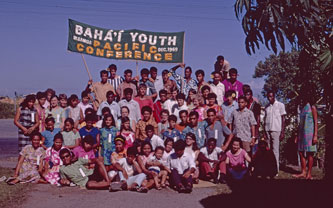 .
. 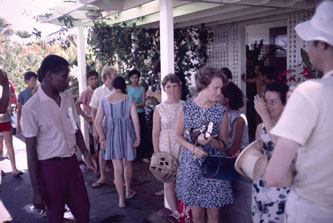 .
. 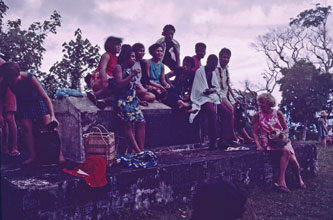
Bahá'í Youth Conference, Apia, Samoa, January 1970; visiting R.L. Stevenson's grave
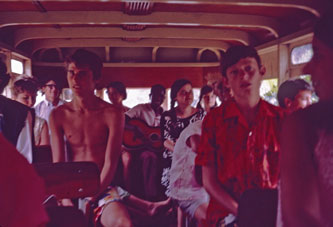 .
. 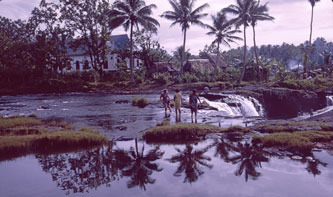 .
. 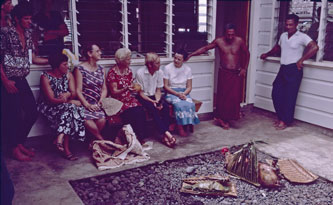
Traveling to other island of Savai'i; wading a stream; custom presentation by Bahá'ís of Puleia village, Savai'i
In Samoa, I met a lovely Bahá’í family, Lilian and Suhayl Ala’i, who told me about a regional intergovernmental organization, the South Pacific Commission (SPC, now the Secretariat of the Pacific Community), that might be interested in hiring an ecologist. I wrote them and they asked me to apply, but finally did not get funding for the position. However this was the beginning of extensive fieldwork on islands and coral reefs around the world combined with visits to many Bahá'í communities.
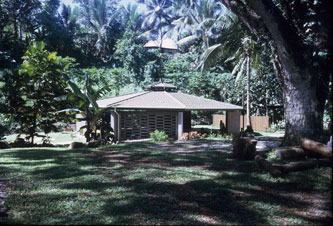 .
. 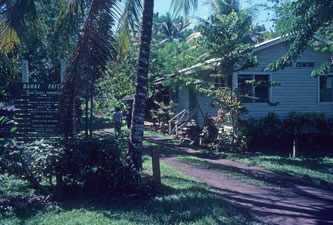 .
. 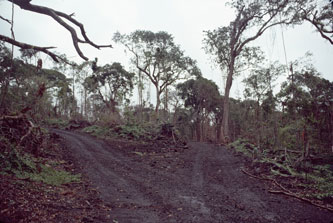
On my frequent trips to Samoa for coral reef surveys, I visited the Bahá'í Teaching Institute and National Office in Apia, and saw forest destruction on Savai'i
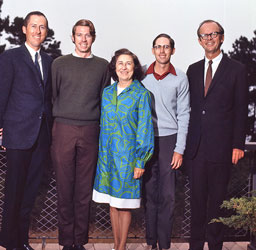 .
. 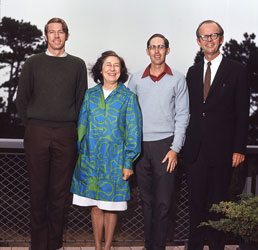
Family Christmas portrait, Pebble Beach, July 1970
In 1970, the Smithsonian offered me a permanent civil service position as Associate Curator of Algae in the Department of Botany, National Museum of Natural History, to continue my research. For the next four years, I went on diving expeditions to reefs around the world, lived for two weeks in 1972 in the PRINUL undersea habitat as an aquanaut studying the reefs of Puerto Rico, collaborated with other young researchers to develop a global programme with 80 researchers to develop a computer model of the coral reef ecosystem, and helped to establish a Smithsonian field station on Carrie Bow Cay on the Belize barrier reef. This also allowed me to visit and assist many Bahá’í communities around the world, as well as at home. For a while, I managed the Washington, D.C. Bahá'í Center, and served on the Local Spiritual Assemblies of Washington, and then Alexandria, Virginia, as well as the District Teaching Committee.
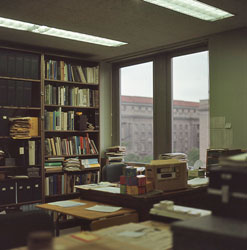 .
. 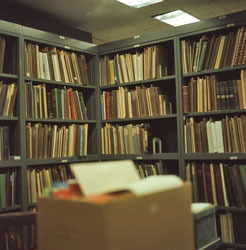 .
. 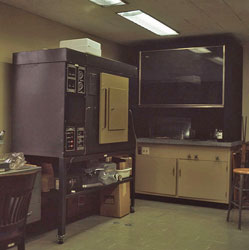 .
. 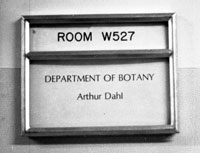
My Smithsonian office and laboratory 1971
 .
. 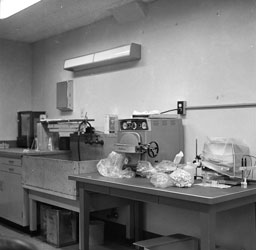 .
. 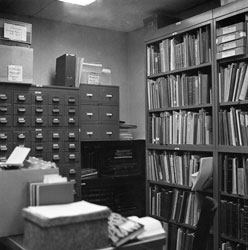
My Smithsonian office 1971
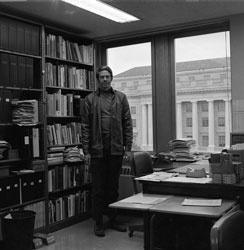 .
. 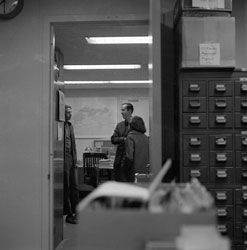 .
. 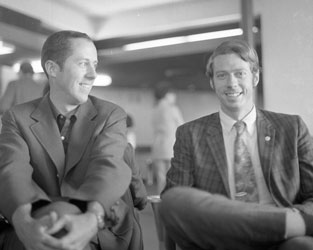
Me and Keith at my Smithsonian office 1971
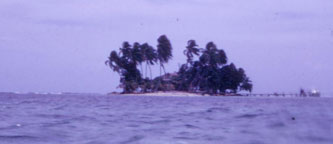 .
. 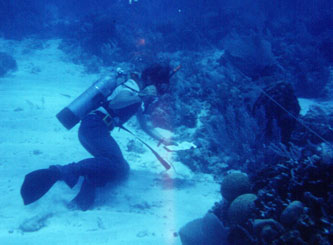
Smithsonian field station on Carrie Boy Cay, Belize; diving on the Belize Barrier Reef
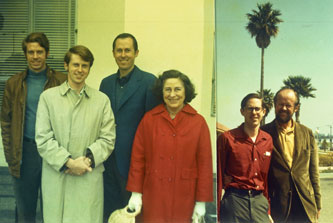 .
. 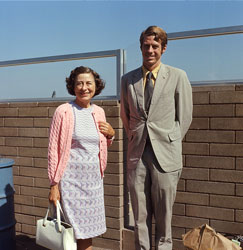 .
. 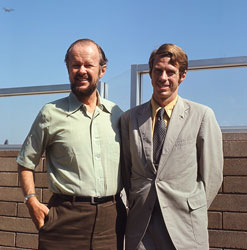
Christmas family picture 1971; Mother and me 1971; Dad and me 1971
In September 1971, I attended the Bahá'í North-Pacific Oceanic Conference in Sapporo, Hokkaido, Japan. One day, at lunch, Hand of the Cause Mr. Furutan asked to join me. He told me a story illustrating the infallible guidance of the Universal House of Justice. He had been sent to Turkey to investigate a group of covenant-breakers who had asked for forgiveness. As far as he could tell, all were sincere. However the House accepted all except one back, and that one proved to be the ring-leader.
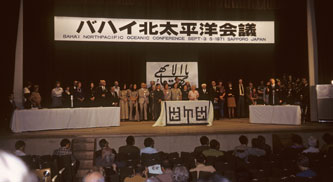
Bahá'í North Pacific Oceanic Conference, Sapporo, Hokkaido, September 1971
In 1972, the Bahá’í International Community (BIC) asked me to represent them as an accredited observer at the United Nations Conference on the Human Environment in Stockholm, Sweden, which created the United Nations Environment Programme (UNEP). I addressed one of the sessions about the need to collaborate with non-governmental organizations. When the chair introduced me as BIC, the Egyptian and Iraqi delegates walked out, but the Iranian delegate passed a message back to me: "Baha'i greetings, Shapour Rassekh", and we met afterwards. We prepared and distributed a statement on The Environment and Human Values as a brochure, and organized a booth in the non-governmental forum.
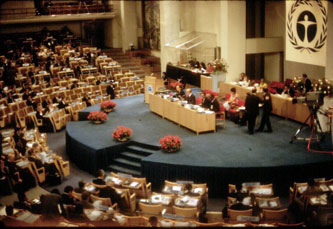 .
. 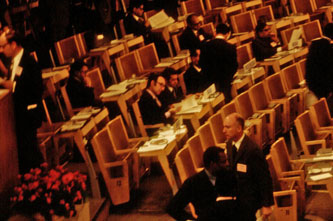 .
. 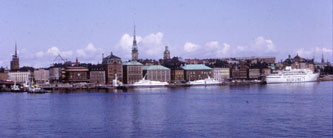
UN Conference, Stockholm 1972; Dr. Rassekh representing Iran; Stockholm
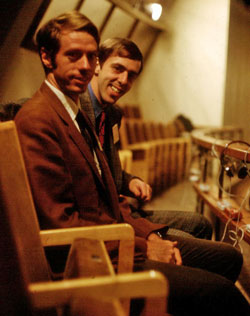 .
. 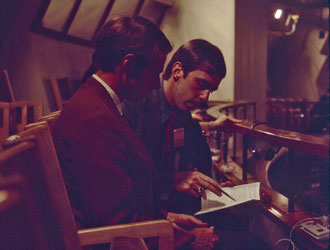 .
. 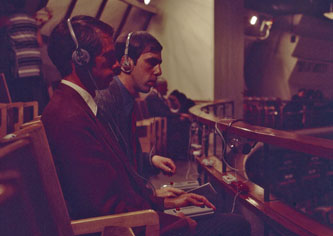
Bahá'í delegation to the Stockholm Conference
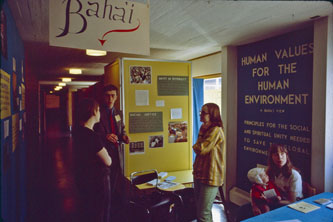 .
. 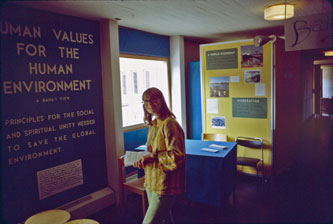 .
. 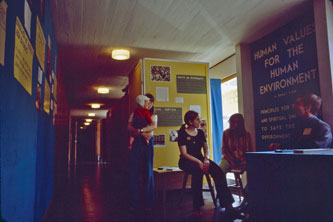
Bahá'í booth at the non-governmental forum
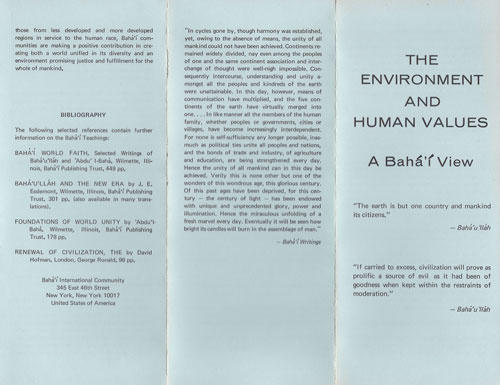 .
. 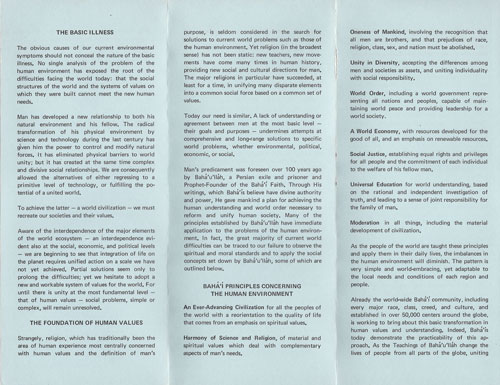
Bahá'í International Community brochure for the conference that I helped to draft
1972 was also the year for the dedication of the Bahá'í House of Worship in Panama. This was the second that I attended, after that in Wilmette, USA in 1953 (and later in Samoa in 1984 and Santiago, Chile, in 2016).
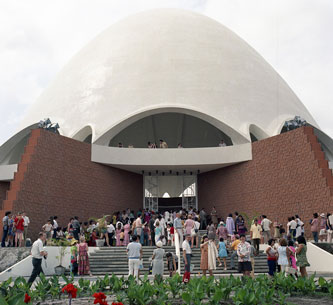 .
. 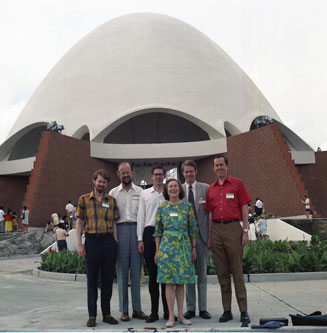 .
. 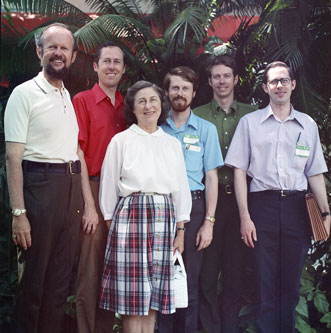
Panama Temple dedication 1972; our whole family was there
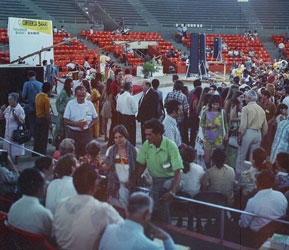 .
. 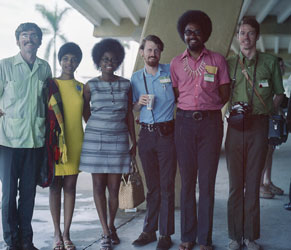 .
. 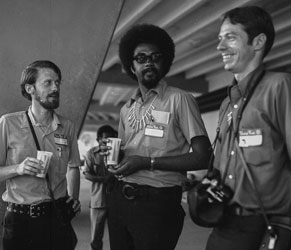
With musicians including my brother Greg and Van Gilmer
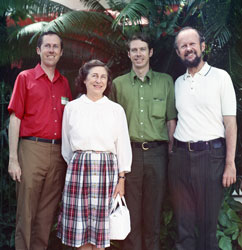 .
. 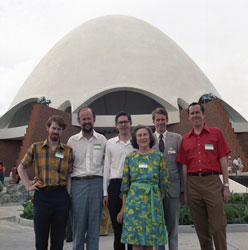 .
. 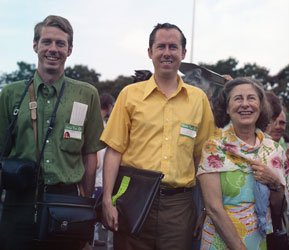
Panama Temple dedication 1972
In December 1972, I was accepted as an aquanaut in the second mission of the Puerto Rico Inter-National Undersea Laboratory (PRINUL) and lived for two weeks at the bottom of a coral reef 10 kilometers off the coast of Puerto Rico (see separate page). I was also offered the post of scientific director of the Harbor Branch Foundation research submarine programme, but fortunately I declined, as a later accident with the submarine killed two researchers on board including the son of the engineer who designed the submersible.
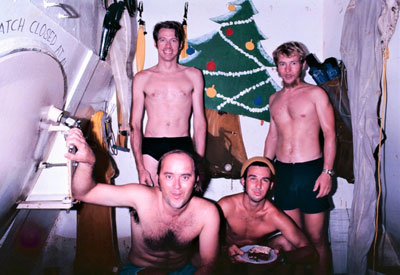 .
. 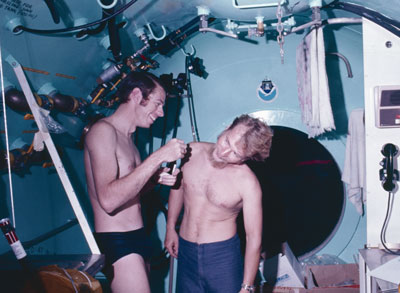
The PRINUL aquanauts celebrate Christmas underwater; me giving Seppo an ear treatment
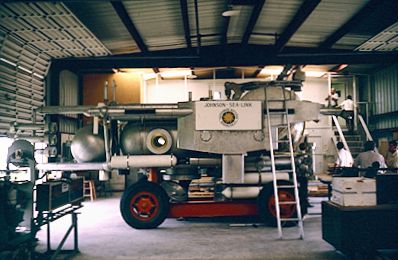 .
. 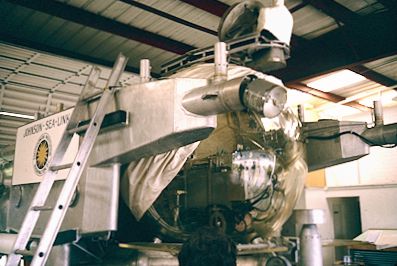
The Johnson-Sea-Link research submarine
Once I had a permanent job, I decided to settle in Alexandria, Virginia, across the Potomac River from Washington, and thus a reasonable commute. I bought a decrepit old wooden townhouse in Old Town Alexandria, one block from George Washington's town house, and just on the border between the black and white neighbourhoods. As I fixed it up, I organized a Bahá'í coffee house every Saturday night for the youth of the region, with usually between 20 and 70 youth coming to sing Bahá'í songs and socialize. It was a complement to the regular firesides at the Huddleston's in Arlington.
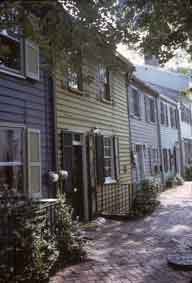 .
. 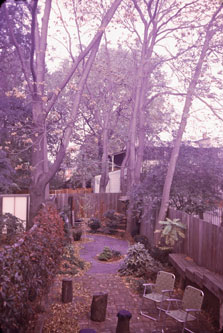 .
. 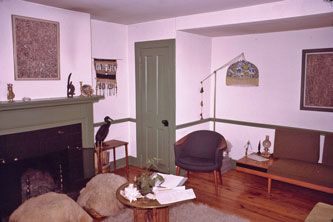
Alexandria town house with small rooms on three floors and a garden in back, perfect for youth gatherings
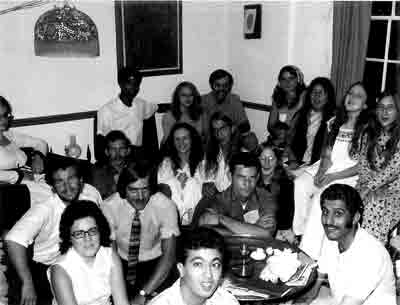
Part of the coffee house crowd 2 September 1972
One year, my next-door neighbour invited me to Christmas dinner with her son, a professor at Northwestern University. I looked for an opportunity to mention the Bahá'í Faith, without success. Over dessert, she turned to me and asked if I was a Bahá'í, as she had seen some things hanging in my window. When I said yes, she replied that she had been to dinner twice with 'Abdu'l-Bahá. I practically fell out of my chair. Her father had been an early believer in New York City, and the Master had come twice to dinner. She was 10 years old, and thought that He was a nice old man. She met other early Bahá'ís, including Louis Bourgeois, the architect of the Bahá'í House of Worship in Wilmette, but she had never understood why the inscriptions over the entrances were in English, not Arabic. She had a long career on Madison Avenue, but never became a Bahá'í.
This was the time of the civil rights movement and the beginning of direct teaching of the Bahá'í Faith among the poor black populations of the rural deep South. Our Bahá'í communities of Washington and northern Virginia were already racially mixed, but there was only one Bahá'í, a black school teacher, in the southern part of the state. After the success in South Carolina, some friends came to show us the new techniques, and we organized a small teaching conference near Suffolk in the south of the state, reaching out to the rural black population. We were twenty, but in two weeks we found six hundred people who wanted to be Bahá'ís. The problem then was to consolidate them. We formed multiracial teams to visit them and many other communities in the South. It was a deeply enriching experience, but showed how much more we needed to learn. Now we have the Institute process.
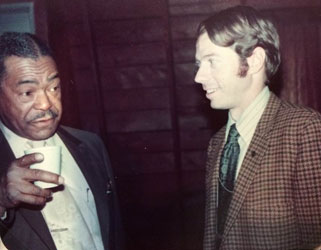 .
. 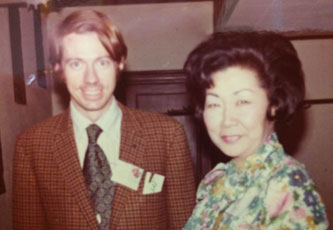 .
. 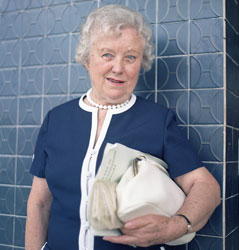
With Bahá'ís in Northern Virginia, including Soo Fouts, Sylvia Ioas
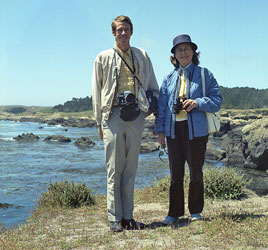 .
. 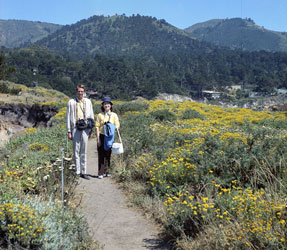 .
. 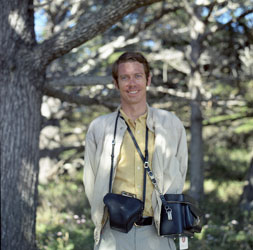
Me and Mother, Point Lobos, April 1973
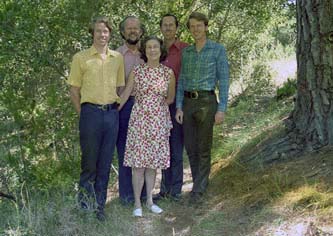 .
. 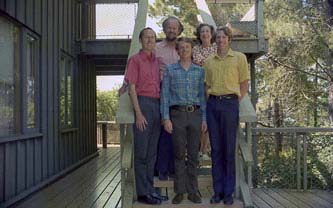 .
. 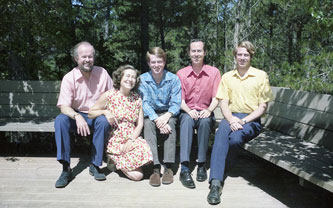
Family at home, Pebble Beach, July 1973
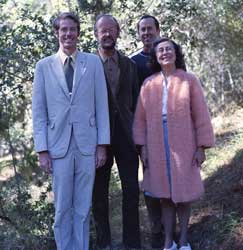 .
. 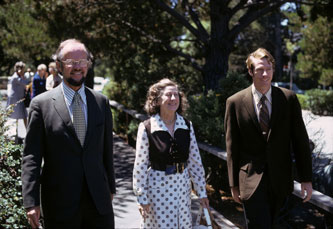 .
. 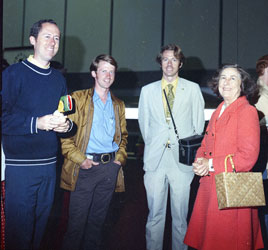
Christmas family portrait 1973; Dad, Mother and me, Aug.1973; Keith, Greg, me, Mother Sept.1974
Go to Part 1: Origins, Childhood and Youth, to 1964
Go to Part 3: Pioneering and International Service 1974-present
Last updated 2 February 2021
Photographs copyright © Arthur Lyon Dahl 1960-1974